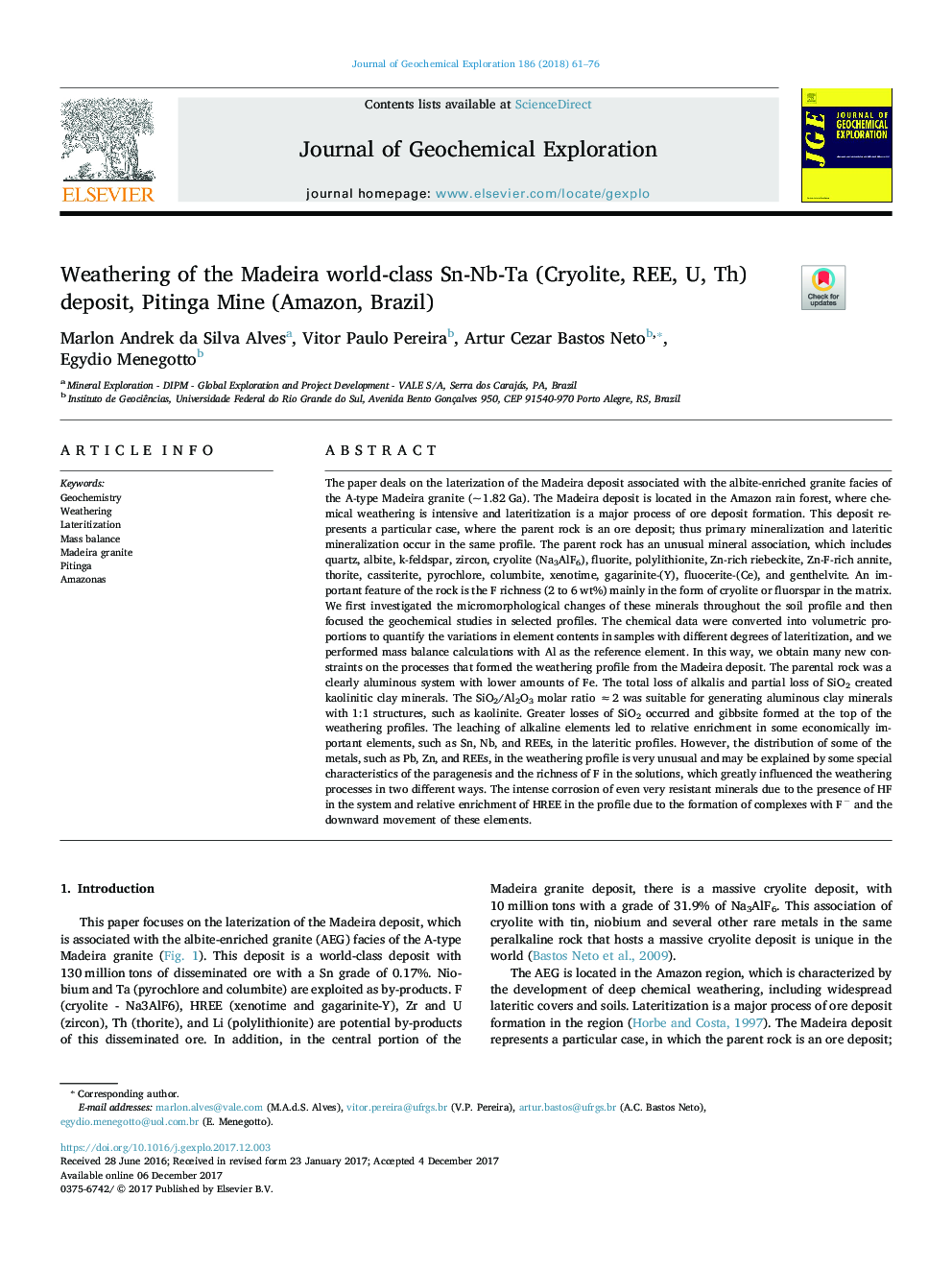| کد مقاله | کد نشریه | سال انتشار | مقاله انگلیسی | نسخه تمام متن |
|---|---|---|---|---|
| 8866072 | 1620871 | 2018 | 16 صفحه PDF | دانلود رایگان |
عنوان انگلیسی مقاله ISI
Weathering of the Madeira world-class Sn-Nb-Ta (Cryolite, REE, U, Th) deposit, Pitinga Mine (Amazon, Brazil)
دانلود مقاله + سفارش ترجمه
دانلود مقاله ISI انگلیسی
رایگان برای ایرانیان
کلمات کلیدی
موضوعات مرتبط
مهندسی و علوم پایه
علوم زمین و سیارات
زمین شناسی اقتصادی
پیش نمایش صفحه اول مقاله

چکیده انگلیسی
The paper deals on the laterization of the Madeira deposit associated with the albite-enriched granite facies of the A-type Madeira granite (~ 1.82 Ga). The Madeira deposit is located in the Amazon rain forest, where chemical weathering is intensive and lateritization is a major process of ore deposit formation. This deposit represents a particular case, where the parent rock is an ore deposit; thus primary mineralization and lateritic mineralization occur in the same profile. The parent rock has an unusual mineral association, which includes quartz, albite, k-feldspar, zircon, cryolite (Na3AlF6), fluorite, polylithionite, Zn-rich riebeckite, Zn-F-rich annite, thorite, cassiterite, pyrochlore, columbite, xenotime, gagarinite-(Y), fluocerite-(Ce), and genthelvite. An important feature of the rock is the F richness (2 to 6 wt%) mainly in the form of cryolite or fluorspar in the matrix. We first investigated the micromorphological changes of these minerals throughout the soil profile and then focused the geochemical studies in selected profiles. The chemical data were converted into volumetric proportions to quantify the variations in element contents in samples with different degrees of lateritization, and we performed mass balance calculations with Al as the reference element. In this way, we obtain many new constraints on the processes that formed the weathering profile from the Madeira deposit. The parental rock was a clearly aluminous system with lower amounts of Fe. The total loss of alkalis and partial loss of SiO2 created kaolinitic clay minerals. The SiO2/Al2O3 molar ratio â 2 was suitable for generating aluminous clay minerals with 1:1 structures, such as kaolinite. Greater losses of SiO2 occurred and gibbsite formed at the top of the weathering profiles. The leaching of alkaline elements led to relative enrichment in some economically important elements, such as Sn, Nb, and REEs, in the lateritic profiles. However, the distribution of some of the metals, such as Pb, Zn, and REEs, in the weathering profile is very unusual and may be explained by some special characteristics of the paragenesis and the richness of F in the solutions, which greatly influenced the weathering processes in two different ways. The intense corrosion of even very resistant minerals due to the presence of HF in the system and relative enrichment of HREE in the profile due to the formation of complexes with Fâ and the downward movement of these elements.
ناشر
Database: Elsevier - ScienceDirect (ساینس دایرکت)
Journal: Journal of Geochemical Exploration - Volume 186, March 2018, Pages 61-76
Journal: Journal of Geochemical Exploration - Volume 186, March 2018, Pages 61-76
نویسندگان
Marlon Andrek da Silva Alves, Vitor Paulo Pereira, Artur Cezar Bastos Neto, Egydio Menegotto,